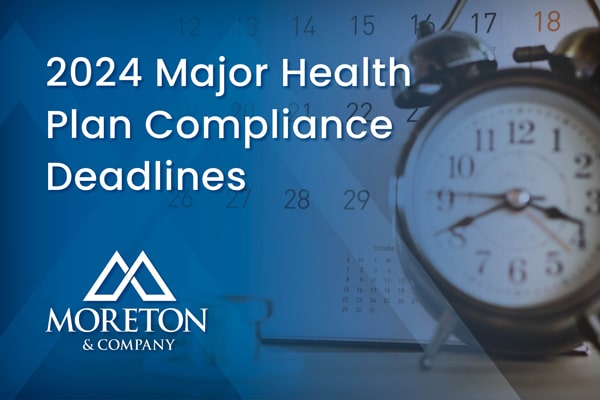
Increasing Your Credit Score
How Credit Scores Are Calculated
FICO uses five major components in the equation that produces your credit score. Those five include:
- Payment history (35% of score): Do you make payments on time? Do you pay the full balance, the minimum, or somewhere between?
- Amounts owed (30% of score): How much do you use of the credit you’re allowed?
- Length of credit history (15% of score): The longer you have an account, the better your score.
- Credit mix (10% of score): FICO likes to see a mix between credit cards, mortgages, and auto loans.
- New credit (10% of score): It’s okay to open new credit occasionally, but if you are applying for several accounts in a short period, it will negatively impact your score.
How to Improve Your Credit Score
Your credit score will change according to your spending habits and ability to manage credit accounts. Once you know when to review your accounts, what to look for, and how to rectify mistakes on your credit report, you can begin working towards a healthy credit score. Here are some tips to get you started:
- Review Your Credit Report: You are entitled to one free credit report a year from each of the three reporting agencies (Equifax, Experian, and TransUnion), and requesting one has no impact on your credit score. Review each report closely. Dispute any errors that you find.
- Set Up Payment Reminders: Write down payment deadlines for each bill and set up reminders online. Consistently paying your bills on time can raise your score within a few months.
- Pay More Than Once in a Billing Cycle: If you can afford it, pay your bills every two weeks rather than once a month.
- Contact Your Creditors: Set up a payment plan immediately if you miss payment deadlines and can’t afford your monthly bills.
- Apply for New Credit Sparingly: Although it increases your total credit limit, it hurts your score if you apply for or open several new accounts in a short time.
- Don’t Close Unused Credit Card Accounts: The age of your credit history matters, and a longer history is better. If you must close credit accounts, close newer ones.
- Pay Down “Maxed Out” Cards First: If you use multiple credit cards and the amount owed on one or more is close to the credit limit, pay that one off first to bring down your credit utilization rate.
- Consider a Debt Consolidation Plan: There could be a temporary drop in your credit score if you enroll in a debt consolidation program, but if you make on-time payments, your score quickly improves while you eliminate the debt that got you in trouble.
- Pay Attention to Credit Utilization: Your credit utilization rate is the amount of revolving credit (such as your credit card limit) you use divided by the amount of revolving credit you have available. A good credit utilization rate is at most 30%.
Dulcio, B. (2023, August 17). How to improve your credit score: Tips & Tricks. Debt.org. https://www.debt.org/credit/improving-your-score/
Saving for Emergencies
Emergency funds are important tools to use during unexpected hardships like losing a job, a health crisis, or other high expense situations. Having an emergency fund can help you avoid going into debt and worsening your future financial situation. Financial planners suggest having two different emergency funds, a short-term and a long-term fund. Open two different savings accounts for both types of emergency funds. Then you can slowly add to the accounts as your availability to save grows.
Short-Term Emergency Funds
Short-term emergency funds are for immediate emergencies. This fund should be between $500-$1,500 depending on your circumstances. Short-term emergency funds cover emergencies like a car repair or replacing a broken home appliance.
Long-Term Emergency Funds
Long-term emergency funds are there for situations that do not have an immediate fix. These could include long-term illness, change in job status, or a natural disaster. The amount of money in your long-term fund will be different depending on your circumstances. Financial advisors suggest that your emergency fund should be big enough to cover at least 3 months of monthly expenses, with 6 months being ideal. Having a long-term emergency fund will allow you to maintain your standard of living without incurring debt.
Calculate your long-term emergency fund:
- Add up all your monthly expenses. This includes rent, car payments, groceries, gas, mortgage payments, etc.
- Multiply that number by the number of months you would like your fund to be.
- Start Saving
Grow Your Emergency Fund:
- Cut unnecessary expenses
- Use a grocery shopping list and stick to it
- Move extra funds, like your tax return, from your checking account to your savings account
- Shop around for better rates on recurring expenses like insurance and credit cards
“Building an Emergency Fund for Unexpected Financial Emergencies.” Debt.Org, 16 Dec. 2021, www.debt.org/advice/building-emergency-fund/.
– Mental Health Moment –
Separating Mental Health
from Mental Illness
Your mental health is as important to your overall well-being as your physical health, but it’s often overlooked. Similarly, mental illness often goes untreated or undiscussed. According to Mental Health America, over half of adults with mental illness don’t receive treatment.
Although mental health and mental illness are related, they aren’t the same. Mental illness can contribute to poor mental health and vice versa, but it’s possible to have poor mental health without a diagnosable mental illness—just as it’s possible to have good mental health with a mental illness.
Understanding Mental Health
Mental health describes your psychological state of well-being. This includes how you feel, think, and interact with others. Mental health impacts your mood and cognition; it also affects your physical health. Your mental health can change over time and may be influenced by numerous factors, including:
- Stress
- Burnout
- Grief
- Physical or mental fatigue
- Financial hardship
- Physical health
Poor mental health can develop into mental illness if symptoms are unmanaged. This can cause distress and an inability to function in everyday activities.
Understanding Mental Illness
A mental illness is a diagnosable health condition that changes the way you think, feel or act. According to the Centers for Disease Control and Prevention, mental illness is one of the most commonly diagnosed health conditions in the United States, affecting 1 in 5 Americans every year. Examples of common mental illnesses include:
- Depression disorder
- Anxiety disorder
- Post-traumatic stress disorder
- Obsessive-compulsive disorder
- Substance use disorder
- Bipolar disorder
Mental illness can affect anyone, regardless of age, gender or background. The following factors may increase the risk of developing a mental illness in your lifetime:
- Genetics
- Alcohol or drug use
- Trauma or abuse
- Other chronic medical conditions (e.g., cystic fibrosis or cancer)
- Loneliness


